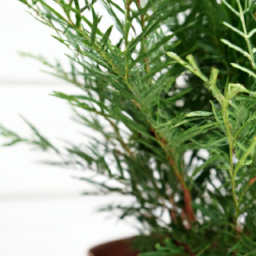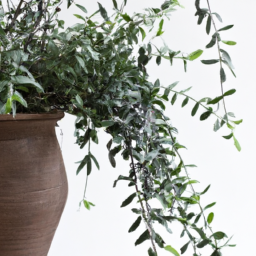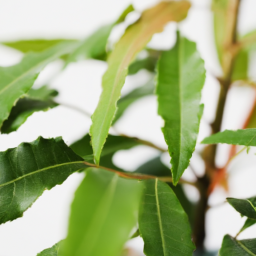
Are you looking to bring a touch of nature into your home? Indoor plants and trees are a fantastic way to add greenery and life to your living space. Not only do they enhance the aesthetic appeal of your home, but they also have numerous health benefits. Indoor plants and trees can help purify the air, reduce stress, and improve overall well-being. In this blog post, we will explore the different types of indoor plants and trees that are perfect for your home, as well as provide tips on how to care for them effectively. Whether you are a seasoned plant enthusiast or a beginner looking to green up your space, this post is for you. So, let’s dive in and discover the wonderful world of indoor plants and trees!
Benefits of Indoor Plants and Trees
Welcome to the wonderful world of indoor plants and trees! Not only do they add beauty and life to your living space, but they also come with a plethora of benefits that can improve your overall well-being. In this guide, we will explore the various advantages of having indoor plants and trees in your home or office.
Improved Air Quality
One of the most well-known benefits of indoor plants and trees is their ability to purify the air. Plants absorb carbon dioxide and release oxygen through the process of photosynthesis, which helps to freshen up the air in your indoor environment. In addition, plants can also remove toxins and pollutants from the air, such as formaldehyde and benzene, which are commonly found in indoor spaces.
Studies have shown that having indoor plants can reduce the levels of indoor air pollutants, leading to improved air quality and a healthier living environment. This can be especially beneficial for individuals who suffer from allergies or respiratory conditions, as plants can help to alleviate symptoms and promote better breathing.
Some of the best indoor plants for improving air quality include the spider plant, peace lily, snake plant, and pothos. These plants are known for their air-purifying properties and can thrive in indoor environments with minimal care.
Stress Reduction
In today’s fast-paced world, stress has become a common problem for many people. Luckily, indoor plants and trees can help to reduce stress and promote a sense of calm and relaxation. The presence of greenery has been shown to have a soothing effect on the mind and body, helping to lower stress levels and improve overall well-being.
Research has found that being around plants can help to lower blood pressure, reduce anxiety, and improve mood. The act of caring for plants, such as watering and pruning, can also be therapeutic and provide a sense of purpose and fulfillment. In addition, the natural beauty of plants can create a peaceful and tranquil atmosphere in your home or office, making it a more inviting and comfortable space to be in.
Some of the best indoor plants for reducing stress include lavender, aloe vera, jasmine, and rosemary. These plants are known for their calming and aromatic properties, which can help to create a relaxing environment and promote feelings of well-being.
Increased Productivity
Believe it or not, indoor plants and trees can also boost productivity and creativity in your workspace. Studies have shown that having plants in the office can improve concentration, memory, and cognitive function, leading to better performance and efficiency. The presence of plants can also help to reduce fatigue and increase energy levels, making it easier to stay focused and motivated throughout the day.
In addition, plants can help to reduce noise levels in the office, creating a more peaceful and productive work environment. The natural elements of plants can also inspire creativity and innovation, leading to new ideas and solutions to problems. By incorporating plants into your workspace, you can create a more vibrant and dynamic atmosphere that fosters productivity and success.
Some of the best indoor plants for increasing productivity include succulents, ferns, rubber plants, and bamboo. These plants are known for their low-maintenance nature and can thrive in a variety of indoor settings, making them perfect for the office environment.

Best Types of Indoor Plants and Trees for Beginners
Choosing the Right Indoor Plants for Your Home
When it comes to choosing indoor plants for your home, there are a few key factors to consider. First, think about the amount of natural light that each room receives. Some plants thrive in bright, direct sunlight, while others prefer low-light conditions. It’s also important to consider the size of the plant and how much space you have available.
One popular choice for beginners is the spider plant. Spider plants are easy to care for and can thrive in a variety of light conditions. They also have air-purifying qualities, making them a great choice for improving indoor air quality. Another beginner-friendly option is the pothos plant. Pothos plants are known for their trailing vines and can thrive in low-light conditions. They are also easy to propagate, making them a fun and rewarding choice for new plant parents.
If you’re looking for a larger statement plant, consider a fiddle leaf fig tree. Fiddle leaf figs are known for their large, glossy leaves and can add a touch of tropical flair to any room. They do best in bright, indirect light and require regular watering to thrive. Another popular tree option for beginners is the rubber plant. Rubber plants have thick, shiny leaves and can tolerate a variety of light conditions. They are also relatively low-maintenance, making them a great choice for new plant parents.
Caring for Your Indoor Plants and Trees
Once you’ve chosen the perfect indoor plants for your home, it’s important to provide them with the proper care to help them thrive. One of the most important factors to consider is watering. Overwatering is a common mistake that can lead to root rot and other issues, so it’s important to let the soil dry out between waterings. On the other hand, underwatering can also be harmful to your plants, so it’s important to monitor the moisture levels regularly.
In addition to watering, it’s important to provide your plants with the proper amount of sunlight. Most indoor plants prefer bright, indirect light, so be sure to place them near a window where they can receive adequate sunlight. If you notice that your plants are not thriving, consider moving them to a different location with better lighting conditions.
Finally, don’t forget to fertilize your indoor plants regularly to help them grow and thrive. Most indoor plants benefit from a balanced, water-soluble fertilizer applied every few weeks during the growing season. Be sure to follow the instructions on the fertilizer package to avoid over-fertilizing, which can be harmful to your plants.
Troubleshooting Common Issues with Indoor Plants
Even with the best care, indoor plants can sometimes run into issues. One common problem is pests, such as spider mites or aphids, which can damage your plants if left untreated. To combat pests, try wiping down your plants with a mixture of water and mild soap, or use an organic insecticidal soap to help control the infestation.
Another common issue with indoor plants is yellowing leaves, which can be caused by a variety of factors, including overwatering, underwatering, or nutrient deficiencies. If you notice yellowing leaves on your plants, try adjusting your watering schedule and fertilizing routine to see if it helps improve their health.
Finally, if you notice that your plants are not growing as well as they should, consider repotting them into a larger container with fresh soil. This can help provide your plants with the space and nutrients they need to thrive and grow to their full potential.
In conclusion, choosing the right indoor plants and trees for your home is a fun and rewarding experience. By considering factors such as light conditions, space, and maintenance requirements, you can find the perfect plants to bring a touch of nature into your living space. With the proper care and attention, your indoor plants will thrive and bring beauty and joy to your home for years to come.

How to Care for Indoor Plants and Trees
Choosing the Right Plants
When it comes to caring for indoor plants and trees, the first step is choosing the right ones for your space. Consider the amount of light, humidity, and temperature in the area where you plan to place your plants. Some plants thrive in low light conditions, while others require bright, indirect sunlight. Research the specific needs of each plant before making a purchase to ensure they will thrive in your home.
Once you have selected your plants, be sure to repot them if necessary. Check the roots to see if they are becoming root-bound or if the plant is outgrowing its current pot. Choose a pot that is slightly larger than the current one, with good drainage holes to prevent overwatering. Use a high-quality potting mix to provide the necessary nutrients for your plants to grow.
Watering and Feeding
Proper watering and feeding are essential for the health of your indoor plants and trees. Overwatering can lead to root rot, while underwatering can cause wilting and stunted growth. Check the moisture level of the soil regularly by sticking your finger into the top inch of soil. If it feels dry, it’s time to water. Be sure to water thoroughly, allowing excess water to drain out of the bottom of the pot.
In addition to water, indoor plants and trees also need nutrients to thrive. Fertilize your plants regularly during the growing season, typically spring and summer. Use a balanced fertilizer specifically formulated for indoor plants, following the instructions on the packaging. Avoid over-fertilizing, as this can lead to nutrient imbalances and damage to the plant.
Light and Temperature
Light and temperature are crucial factors in caring for indoor plants and trees. Most plants require bright, indirect sunlight to thrive, so be sure to place them near a window where they can receive adequate light. Rotate your plants regularly to ensure even growth on all sides.
Temperature is also important for the health of your plants. Most indoor plants prefer temperatures between 65-75 degrees Fahrenheit during the day and slightly cooler at night. Avoid placing your plants near drafty windows or heating vents, as extreme temperature fluctuations can stress the plant.
By following these steps and providing proper care, your indoor plants and trees will thrive and bring beauty and greenery to your home. Remember to research the specific needs of each plant and adjust your care routine accordingly. With a little love and attention, your indoor garden will flourish for years to come.
Summary Snapshot
Indoor plants and trees are a great way to bring a touch of nature into your home or office space. Not only do they add a pop of color and texture to your decor, but they also have numerous health benefits. Plants can help improve air quality by removing toxins and adding oxygen to the air, creating a healthier environment for you to live and work in.
In addition to their health benefits, indoor plants and trees can also help reduce stress and improve your overall mood. Studies have shown that being around plants can have a calming effect on the mind and body, helping to create a more relaxed and peaceful atmosphere. Whether you have a green thumb or not, there are plenty of low-maintenance options available that are perfect for beginners. So why not bring a little bit of the outdoors inside and enjoy all the benefits that indoor plants and trees have to offer?
Here are the top questions that we were asked:
Q1. What are some popular indoor plants and trees?
A1. Some popular indoor plants and trees include the Fiddle Leaf Fig, Snake Plant, Pothos, Rubber Plant, and Monstera. These plants are known for their ability to thrive indoors and add a touch of greenery to any space.
Q2. How do I care for indoor plants and trees?
A2. To care for indoor plants and trees, it’s important to provide them with the right amount of light, water, and humidity. Make sure to research the specific needs of each plant you have, as different species may require different care routines.
Q3. Can indoor plants and trees improve air quality?
A3. Yes, indoor plants and trees can help improve air quality by filtering out pollutants and releasing oxygen. They can also help regulate humidity levels in your home, creating a healthier indoor environment.
Q4. What are some benefits of having indoor plants and trees?
A4. Some benefits of having indoor plants and trees include reducing stress, improving mood, boosting productivity, and adding a decorative element to your space. Studies have shown that being around plants can have a positive impact on mental and physical well-being.
Q5. How can I incorporate indoor plants and trees into my home decor?
A5. You can incorporate indoor plants and trees into your home decor by placing them in decorative pots or planters, creating a green wall or hanging planters, or using them as a centerpiece on a table or shelf. Get creative with how you display your plants to enhance the overall aesthetic of your space.
Dr. Olivia Green is a botanist with over two decades of experience in indoor plant cultivation. She holds a Ph.D. in Plant Biology and has dedicated her career to researching plant behavior in controlled environments. Dr. Green is passionate about helping plant enthusiasts master the art of indoor gardening through her extensive knowledge and practical insights.


